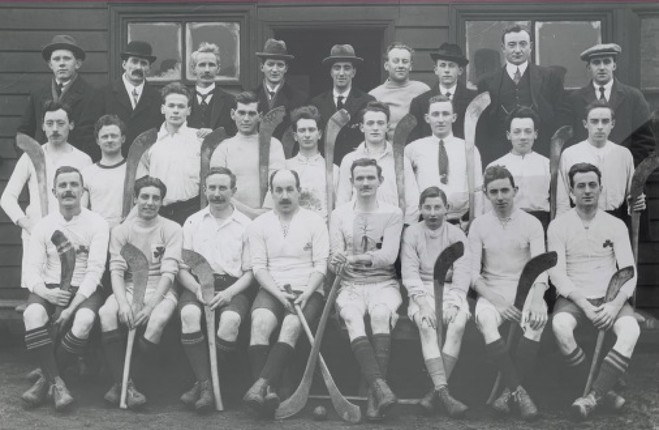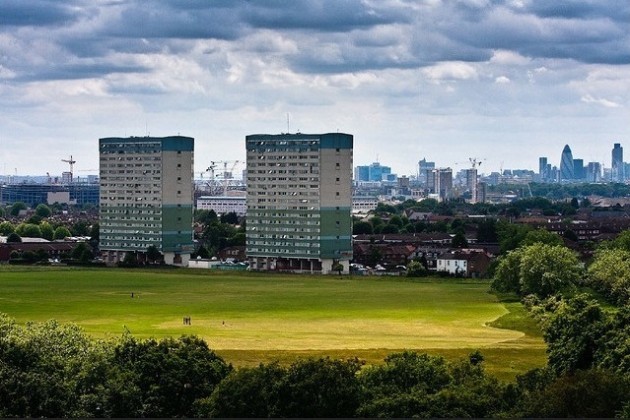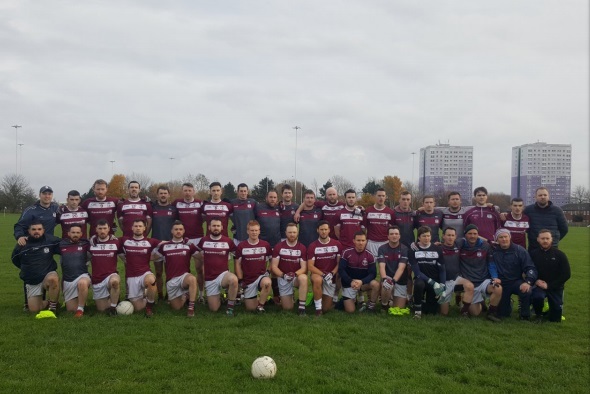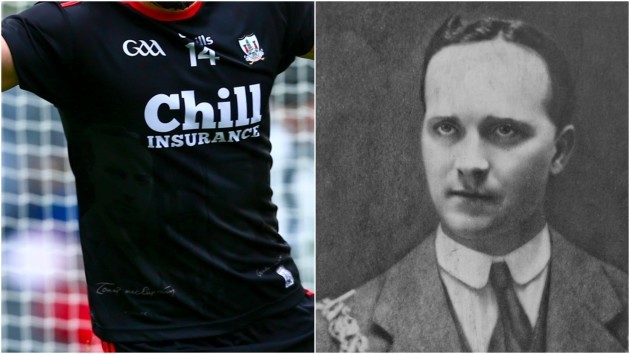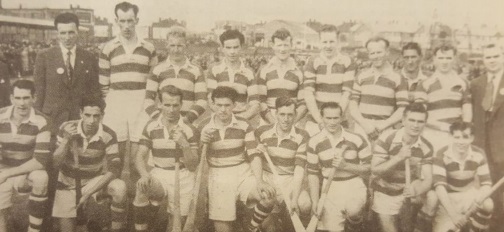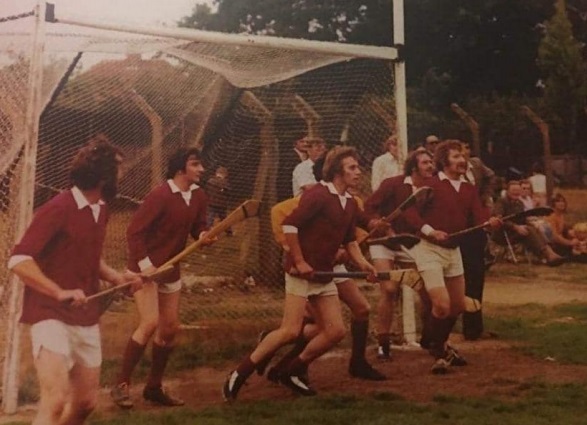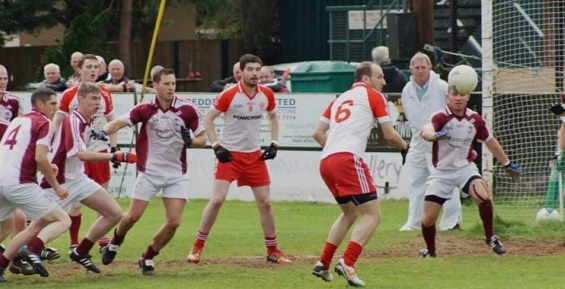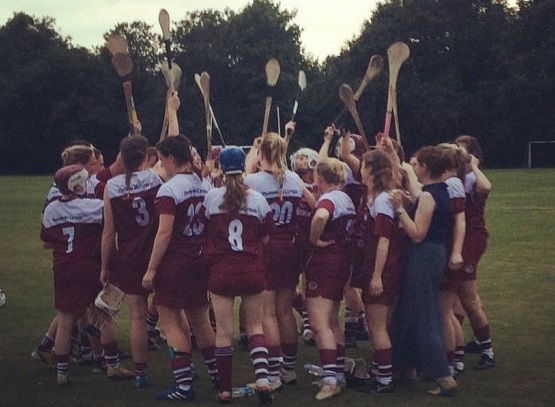HURLING DIDN’T GO away.
Even following the shutdown of the county board and the haemorrhaging of players amidst the biggest war in human history to that point, there were still a few lads in London who hurled on.
Cricket had packed up in 1914. The FA followed suit a year later, albeit permitting the organisation of games on a local level. The GAA in the English capital, meanwhile, tried to persist with something resembling normality but ultimately the combination of a mass exodus homeward to avoid the war, and the enlisting of Irishmen to fight in it, proved terminal to its recognised activities. London GAA ceased to exist in an official capacity by late 1915.
Sport, like many elements of society, was paused indefinitely. These were unprecedented times.
But still they hurled in Wanstead Flats.
Over a century later, the threat to people’s lives comes in a different shape but has forced upon society a more absolute shutdown, this one now as applicable to Ireland as it is our neighbours across the way.
Among the innumerable plans to fall foul of the coronavirus were a series of fixtures between Cork’s Carrigaline GAA Club and their would-have-been visitors, Thomas McCurtains.
Well over 100 members of the East London club — six teams, their coaches, and several other club members — had been due to land into the native county of the man after whom they were named, last weekend marking 100 years since Sinn Féin Lord Mayor of Cork and IRA commandant Tomás Mac Curtain was murdered in his home in front of his wife and son by members of the RIC. Alas, the club’s colossal logistical undertaking was made in vain.
But the two years of efforts which preceded it will stand the test of time, as has the organisation born in the wake of Mac Curtain’s death a century ago.
In 2018, a decision was made to create an official record of the club’s entire history. A centenary committee was formed, several generations of McCurtains members — led by former PRO Finnian O’Dowd, current PRO Richie Ellis and historian Darren Kelly — putting their heads together to trawl British and Irish newspaper archives, peruse libraries, and piece together the story of the East London institution that binds them.
What they now know for sure is that sometime between Tomás Mac Curtain’s death on 20 March 1920 and August that same year, the GAA club to which they belong was born in the English capital and named in his honour.
Gaels had continued to congregate in Wanstead Flats for pre-arranged puck-arounds throughout the war, the embers of a dying fire. The shockwaves caused by Mac Curtain’s chilling murder in Cork extended far beyond the UK but they drove some of these wartime hurlers — many of them by then members of the Forest Gate Gaelic League and the Irish Self-Determination League — to further bind their sporting interests.
A group consisting mainly of Cork men (including an ex-inter-country footballer by the name of Mick Looney), but spearheaded by a Frank Fallon of Leitrim and a Seán Twomey of Limerick, formed the ‘Tomás Mac Curtáin GAA Club’.
Proof of the club’s existence by August 1920 comes in the form of a letter sent from London to GAA Central Council that month informing them of the formation of a new, post-World War I London County Board. Alluded to in the letter alongside four other clubs were the newly formed McCurtains.
99 years ago yesterday, they and three of those clubs fielded teams in the 1921 London football and hurling championships which began at Manor Park Athletic Grounds, near Ilford. After a hiatus, and amid an upsurge of Irish nationalism, the GAA in London began its marked revival.
“There probably was a knowledge of the club’s history but it was muddled,” says McCurtains PRO Richie Ellis, a Meath man. “It was like Chinese Whispers. You’d ask 10 people and you’d get 10 different versions. It was where to find the actual truth was the thing, and that was quite the task.
“Cold-searching ‘McCurtain’ around that time is a bit of a minefield because, obviously, you’re going to get a lot of stuff about actual Tomás Mac Curtain and not the club. But when you narrow it down to London newspapers you start to have a bit more luck, and even the Cork Examiner used to run pieces about London GAA back in the early days.
“We’re very lucky that one of our members, Darren Kelly, is a historian who has written about the 1916 Rising, the War of Independence and so on, so he had loads of sources [of information] that he could explore and he could focus on the earlier years.
“Pat Griffin, who was the PRO for London GAA at the turn of the century, wrote a book [Gaelic Hearts: The History of the Gaelic Athletic Association in London] and we found that to be a lot closer to the truth than some of those stories that even some of the older members had heard.
“Like, the oldest member of the club is 80 and joined the club in 1959. He put a huge amount of effort into it and he had a load of information from the ’60s, ’70s and ’80s, but anything he had heard from beforehand was hearsay.”
Never disputed was the fact that 1933 was a landmark year for McCurtains following a difficult first decade and a bit in existence.
Two years prior, Ford had opened a massive new factory in Dagenham and in ’33, they moved production of their Fordson Model N tractor from Cork to their East London base.
Such was the volume of Cork men who followed the jobs to Dagenham, locals began to describe the suburban town and its surrounding area as ‘Little Cork’. Indeed, one story goes that the Rebel-County stranglehold over the local motor industry was such that it sparked the coining of the term ‘The Murfia’.
Back home, meanwhile, these Ford workers were called ‘Dagenham Yanks’, known to arrive back on Leeside for Christmas in swanky suits, many of which were sold as soon as their wearers set foot back on the banks of the Thames.
Considering their name and location, McCurtains were naturally the predominant beneficiaries of this Corkonian infusion. They were able to capitalise on this further when, as part of a deal with Ford, Dagenham Council provided them with a pitch on Ballards Road. They left Forest Gate and moved to their new headquarters, nearer the factory. They would remain there for nearly 80 years.
McCurtains won London Senior Football Championships in both 1934 and 1935, the latter team consisting almost exclusively of players from Cork. That influence, while rarely so accentuated on a teamsheet again, would last across both codes until the ’80s. The hurlers, meanwhile, reached a Senior Championship final and won a Senior League during the first two years under Murfia rule.
However, the club founded in the shadows of World War I couldn’t survive its even grimmer sequel. In 1939, McCurtains disbanded. Several club members had opted to make tracks for home to avoid conscription to the British army, but the majority simply didn’t have the time to play ball on account of the fact that Ford in Dagenham had begun to produce military vehicles to assist the Allied war effort; ultimately, McCurtains were bled of players to the point that they could no longer field a team.
They didn’t reform until 1948, adopting the new name ‘Hibernians’ after the local dance hall frequented by members — a trend among GAA teams at the time who tended to be sponsored by these social clubs.
It was another five years before they reverted to their former name, their hurlers by then having clawed their way back up to Senior.
And this revival with the stick and ball led to one of the club’s most famous days.
In 1954, just a week after beating Wexford in the All-Ireland final, Christy Ring and the three-in-a-row-winning Cork hurlers landed into Dagenham to face a McCurtains selection sprinkled with a number of other hurling standouts from nearby clubs.
Organised by Michael Ronayne, chief engineer at the Ford plant, the historic trip saw the ’54 Rebels celebrated at a dinner in Dagenham Civic Centre — an evening attended by then-Irish Minister for External Affairs and future Taoiseach Liam Cosgrave, Irish Ambassador F.H. Boland, and the industrialist Patrick Hennessey, general manager of Ford Britain who had begun his career in Cork in 1920.
Cork started with 10 of their All-Ireland-winning XV from a Sunday prior, including Ring. 10,000 spectators — Cosgrave, Boland, Hennessey and the mayor and mayoress of Dagenham among them — crammed into the Ford Sports Complex to catch a glimpse of the eight-time All-Ireland winner and his long-reigning team-mates in the blood and bandage.
They were treated to a spectacle, the Exiles putting it up to the visiting Rebels but ultimately succumbing on a scoreline of 9-6 to 4-6.
Ring was, of course, electric.
An Offaly man by the name of Bill Flanagan was given the pointless task of marking him and was by all accounts taken to a dark place. He wound up in hospital requiring stitches. Perhaps of the belief that he was incapable of experiencing any further humiliation than had been inflicted upon him by Ring, he asked the nurse who patched him up if she’d like to go out with him. She would later become his wife.
Flanagan had marked the king and met his queen within the space of a few hours. It’s unclear as to whether or not he was aware of the latter fact by the time he and Ring reconvened at the customary dance in St Peter’s Hall later that evening, but whenever they met subsequently, Flanagan would always insist on buying Ring a drink — a token of his gratitude for hospitalising him that day.
And Charlton Athletic Football Club owe Ring a debt of gratitude, too: the Flanagans’ son, Mike, went on to become one of the Addicks’ greatest ever strikers, scoring over 100 goals across two stints and earning three England ‘B’ caps which precluded him from representing the country of his father’s birth. He was involved in the GAA in London, however, and also managed Waterford United in the League of Ireland at the turn of the century.
Ring’s magisterial display and Bill Flanagan’s magical day is a footnote in the history of Thomas McCurtains GAA Club and yet there is something essential about its contribution to the story of this London-Irish institution.
But perhaps even more indicative of what clubs like McCurtains represent within Irish communities abroad is a lower-key story from a year later.
A fixture mix-up saw a 1955 Junior Football Championship clash between McCurtains and Slievenamon, and a Junior Hurling Championship game between Emeralds and Thomas Moore’s, scheduled to take place simultaneously on the same pitch in Dagenham. The crisis was averted, however, when Slievenamon and Moore’s failed to field respective XVs.
And so, having shown up with full complements or something resembling them, the McCurtains footballers and the Emeralds hurlers decided to play a hurling challenge match among themselves.
At around the midway point in the second half, news spilt onto the pitch that back home, Limerick had beaten Clare to win their first Munster Senior Hurling Championship in 15 years. The challenge match was halted as Limerick men from both sides embraced each other in celebration, their drought over.
So, rest assured, it wasn’t all about Cork. Far from it, in fact. Legendary Kerry forward Paudie Sheehy, who had helped to curtail many a Rebellion in the Munster championship, lined out on a few occasions for McCurtains in the ’50s when he was brought over to Ford to train as an auditor. A week after his final challenge match on Ballards Road, he starred for his province at Croke Park in a then-important Railway Cup fixture.
In the mid-’70s, McCurtains changed their official colours from green and gold to maroon. It has been alleged that the decision was made for the club to adopt Rebel red and white, but the member tasked with placing the order for the new jerseys was from Galway and decided to switch things up as a practical joke on the club’s Murfia representatives. McCurtains still play in maroon some 45 years later.
That was the colour donned by an international recruit in 1999 when, one day, some absolute unit from Australia turned up with gear asking about the Guy-lic footy match. His name was Russell and there was one small issue: Russell had forgotten the name of the team for whom he had been asked to line out earlier in the week.
Without so much as batting an eyelid, chairman Tom Watson — already by then a club legend, and still involved 21 years on — ushered him into the McCurtains dressing room where he was handed a jersey and given a briefing on the rules. The Aussie ended up having a stormer in the middle of the park, fielding every ball that was floated within an ass’s roar of him.
After the game, the opposition manager came over full of praise for Big Russ. Funnily enough, he said, an Australian had been due to tog out for his crowd that day but he hadn’t shown up.
Russell wound up playing the whole season for McCurtains, reaching a Senior Football Championship semi-final.
They are just a handful of stories from an incalculable total. And yet a club so weighted in history finds itself fairly bereft of top honours, its trophy cabinet boasting plenty of 7s, Junior and Intermediate successes — particularly from the ’70s, ’80s and noughties — but fairly barren on the Senior front.
Indeed, you can count on one hand McCurtains’ Senior titles across both codes: following the two football titles they won as the Ford connection was forged in the early ‘30s, they added just one more, in hurling, nearly years later.
That 1987 small-ball triumph was as much of an upset as it was an outlier, McCurtains sealing their first at the level at the expense of Brian Borus, who were chasing a 27th.
The legendary Brians would sadly fold some years later but McCurtains ploughed on, firstly towards the new millennium, the ’90s bleak on the silverware front. The more fruitful noughties produced three Intermediate hurling titles, plus one in football, and saw the club end its 60-odd-year stint in Dagenham; McCurtains moved 10 minutes down the road to a hospital grounds in Goodmayes, an area more centrally located and far more accessible via public transport for players. This was to be a transformative decision, the benefits of which are starting to be felt now.
At the start of the decade just gone, however, things weren’t looking especially promising — at least apart from the Ladies football team who won three Junior Championships during their first five years in existence.
The simultaneous struggles across both male codes are probably best encapsulated by a story from 2012 when opponents St Gabriels — the leading lights up at Senior — found themselves a player shy for an Intermediate hurling league game. Half-time arrived and Gabriels were told to find a 15th player or forfeit the game.
Up stepped club chairman Kerril Burke, who stood in at corner-forward to make up the numbers and ensure his club could see out the fixture. Incredibly, however, Burke managed to score the decisive goal as Gabriels won by three points, a story which became national news back in Ireland for the simple fact that he was 73 years old (and not in fact 74 as had been reported in the papers, he clarified to Ian Dempsey on TodayFM).
“I just happened to be in the right place at the right time and put the ball in the net,” Burke told the Irish Examiner. “Will I play again? Quite possibly. I’d never say never.”
Still silent, however, is his McCurtains marker whose identity remains shrouded in mystery eight years on.
But soon afterwards, the club’s on-field fortunes would take a remarkable upturn.
Between their four first teams — male and female in both codes — McCurtains won a championship trophy every year between 2014 and 2019: the Ladies footballers ascended to Intermediate; their camogie team won an All-Britain Junior title and an All-Britain league a year after they formed in 2015; the men’s footballers took Junior Championship and Division 3 (Junior) league honours in 2017, and sealed All-Britain Junior success and the London Intermediate Championship last year; the hurlers won the Intermediate league and championship double in 2018.
And so, suddenly, 100 years and a few bumps in the road later, Thomas McCurtains find themselves in the enviable position of being the only club in London playing Senior league and championship in both hurling and football, and have become the only club in Britain with representation across all four codes and at underage level, where they have teams from U8s upwards.
But how?
“It’s just gone from strength to strength even in the last five or six years,” says PRO Richie Ellis. “I think the situation in East London is that there’s a lot more people coming over than there used to be, but also a lot fewer people leaving.
“For 100 years we haven’t been winning an awful lot — bits here and there — but in the last few years we’ve become very strong across all codes, with all four teams in the men’s and women’s.”
“I think the demographics of London have started to change, all right,” says Padraig ‘Pop’ Geraghty, manager of the men’s footballers. “Even though we had the connection with Ford and East London, historically, the GAA here was all in West London — Cricklewood, Kilburn and areas like that.
Whereas now, the younger generation coming over are working professionals, white-collar. They might be based in places like Canary Wharf, Liverpool Street, Shoreditch; you have a generation of people looking to live in Greenwich, Bow, Mile End, and that’s more in our catchment area, then. Goodmayes is about 20 minutes on a train from Liverpool Street (central train station).
For their home ground, where they already had dressing rooms, a floodlit training pitch and a full-size GAA pitch (use of which is exclusive to McCurtains), they last year sourced a load of second-hand gym equipment on Gumtree and built a strength-and-conditioning area.
The whole thing cost £600; players arrived at the ground before training to dig up the chosen area, lay a foundation of sand, roll out the astroturf that they had acquired and, finally, set up the equipment.
It reminded Geraghty of being involved in a club back home, which is kind of the point to all of this, and always has been.
Mind you, just over 15 years after their relocation from Dagenham to the hospital grounds up the road, McCurtains re-planted roots are starting to take hold.
“You’d definitely see the change, now,” explains Mayo native Geraghty, whose footballers last year hailed from 27 counties — and closer to McCurtains’ home. “We’ve actually set up a kind of second team in the football in the reserve league. It’s a development team with the whole idea that we bring through some younger lads from our underage setup [who were raised in London].
We have a lad in with the hurlers, Liam O’Brien, who’s second-generation — Cockney born and bred but an absolutely fantastically gifted hurler, a constant starter. You have a young lad who came through for the footballers this year, Tom Grannell — absolutely fantastic footballer, no fear, and a real talent. And then we’ve Harry Corkery who I think is more Irish than anyone on the team but was born and bred over here. He’d sing Irish songs for ya for the whole night. People like them are invaluable because chances are, they’re always going to be around; McCurtains is their club, essentially — they haven’t joined after leaving Ireland or leaving behind a club at home. This is their local club and we want to encourage that more and more.
The future seems somewhat different, then. Bright, certainly. But that’s not to suggest McCurtains will stray too far from their century-spanning past, either. The reality is that nobody from Ireland moves to London in order to play hurling, football or camogie, and nobody from Ireland will stay in London to play them, either. Squads will forever fluctuate. The club’s core function, however, will never waver.
“Turnover, retention, recruitment — they’re almost like business terms you’re dealing with!” Geraghty laughs. “Every year, you have to do a recruitment drive to get the club’s name out there.
“But the nature of it here is different, like. The GAA overseas — first and foremost it’s about offering people a community, offering people who move away from home something that they can relate to; a chance to make a group of friends. That’s what we’re here for.
“If people want to stay for a year, two years, 10 years or 20 years, it doesn’t really matter, because what we’re here to do is provide that outlet for them. Obviously, if people stay long-term, it’s brilliant, but we’re all realistic and realise that’s often not going to be the case.
“It is a challenge — probably the biggest challenge — but I think we’ve been quite lucky in recent years where the men’s footballers and the hurlers have seen quite a bit of stability. It’s been the same group around for a number of years and that’s obviously led to success. Whereas for the ladies footballers, for example, there have been players coming and going and that’s been hard for them, having to keep rebuilding a squad.
“It’s just the reality of it: London is a global city and people might come here for work, or maybe to get away from home or just for a change of scenery, but we’re not going to try and nail them to a mast. It’s more important to just enjoy it while you’re here and if you want to play a bit of football or hurling or camogie while you’re at it, we’re there to offer that as well. That will never change.
100 years is a very long time for any club to be alive, never mind a club based overseas where it’s tough to keep things going. It’s important for anybody who joins the club to see, ‘Here, look, this is what you’re going to be a part of — you are joining a club, you’re joining something with history.’ And I suppose when you do pull on the jersey, then, whatever the code, you feel you’re part of something big and understand you’re part of something special.
“We’re looking to push on, now, into the next hundred years,” laughs PRO Ellis. “We’re on the up, anyway.”
